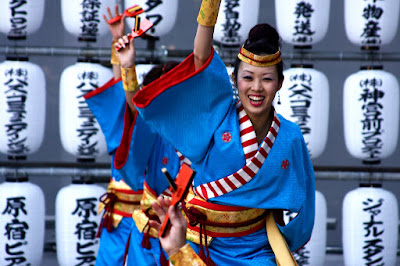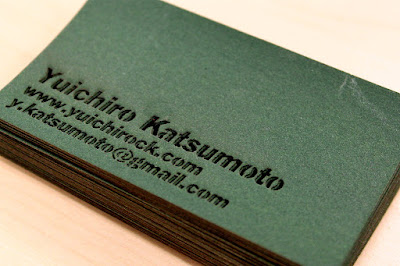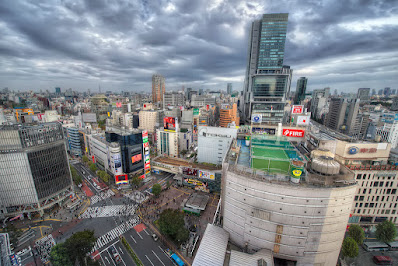 |
| Photo Credit: Yo3up at Flickr |
 |
| Photo Credit: Patrick Vierthaler at Flickr |
 |
| Yosakoi Festival by Kumar nav at Flickr |
 |
| Photo Credit: Yo3up at Flickr |
 |
| Photo Credit: Wikimedia Commons |
 |
| Photo Credit: Yo3up at Flickr |
 |
| Photo Credit: Patrick Vierthaler at Flickr |
 |
| Yosakoi Festival by Kumar nav at Flickr |
 |
| Photo Credit: Yo3up at Flickr |
 |
| Photo Credit: Wikimedia Commons |
.jpg) |
Sugoi Mart Japan Kit Kats Variety Pack |
.jpg) |
Demon Slayer Figuarts Zero Figure: Shinobu |
.jpg) |
Deluxe Kirby Otamatone |
.jpg) |
Sugoi Mart Deluxe Lucky Bag |
 |
One of the key components of working successfully in Japan is belonging to the team and working well with others on the team. Most projects are worked on as a group with lots of meetings to discuss the project and make decisions via group consensus. Group harmony (wa) is key. A team-based attitude is important rather than standing out as an individual. Your co-workers are your teammates rather than your rivals.
 |
| "Team work" by kevin dooley |
Nomunication takes the Japanese word for drink “nomu” and combines it with the English word “communication”. Drinking after work is an important part of the work culture here in Japan and is done to further strengthen relationships and the teamwork mentioned above. Drinking with your co-workers after work to relax and strengthen your bond is an essential part of Japanese work etiquette.
 |
| "Early One Morning" by amirjina |
Japanese society places strong importance on the hierarchical relationship between a senior and a junior. The Senpai (senior) and Kohai (junior) system has its roots in Confucian teaching but has developed its very own Japanese style and is deeply embedded into Japanese culture. It can be found everywhere in society from businesses and schools to clubs, organizations, and associations. Understanding how it works and where you fit into this hierarchy is essential in the workplace.
The Japanese are known for being some of the hardest working people on the planet with long working hours and loads of overtime. It is not uncommon for people to stay at work until 9 or 10 at night. Companies have traditionally looked favourably upon employees who work overtime as they are seen as being more diligent and hardworking. Very often, employees will work overtime because they are mindful of their co-workers and feel nervous about leaving work if everyone else is still working.
One of the key components of working in Japan is exchanging business cards in a formal situation. Like anything in Japanese society, it comes with its own list of rules and procedures which must be strictly adhered to. Some important things to learn include how to accept the business card with both hands, having the right angle in your bow and what to do with the card once you have received it, Common faux pas include stuffing it into your pocket and leaving it behind on the table. Make sure you get yourself a nice business card holder to treat the cards with respect.
 |
| "Business Card 2012" by katsumotoy |
Working in Japan can be an interesting and rewarding experience as long as you keep a positive attitude, understand the work system, and adapt to the new lifestyle.
 |
| "Shibuya Crossing" by Luke Zeme Photography |
For those who have been in Japan for a few years and are looking to further their career as a teacher, it makes sense to move from an ALT role to teaching at the university level. While this is quite a big step up, it is still possible for most with the right experience and qualifications.
In this post, I will outline some of the key criteria that you will need to have in order to make the jump from being an ALT to a teacher at a university in Japan.
One of the main criteria for working at the university level in Japan is a master’s degree (related to teaching). This could be in TEFL (Teaching English as a Foreign Language) or Linguistics. Getting a masters is not an easy thing and can take some time, especially if you are working full time and are doing your master’s online. Try and obtain your masters while working as an ALT as the shorter working hours and long vacation time is ideal for achieving this.
 |
| "Tokyo University of Foreign Studies" by Kimtaro is licensed under CC BY 2.0. |
The Cambridge CELTA Certificate is a great initial step in gaining the necessary qualifications to work at the university level in Japan. It is the most widely recognised English teaching qualification in the world and is regarded in high esteem by employers. You can complete one in a few months and then start on the process of obtaining a masters. In fact, some universities might accept you with only a CELTA certificate if you are lucky.
Presentations gain you points for your application to a university level teaching job. Try and give as many as you can to build your presentation portfolio on your CV. A great place to start is the JALT (Japan Association for Language Teaching) Organization which has chapters in most prefectures in Japan and have monthly meetings which are always looking for new and enthusiastic presenters. The content of the presentation can be on anything that is teaching related in any field from kindergarten to adults.
 |
| Image by NASA Goddard Photo and Video is licensed under CC BY 2.0. |
Another way to gain points is via publications in academic journals which you can do by publishing the material that you have created or share your knowledge in a particular field. JALT has a publication called “The Language Teacher Journal” which comes out every two months. It is a great way to get your material out there in the Japan teaching world. A great way to start is to find someone (hopefully a full-time lecturer) who is interested in your work, or who is already working on something similar and do a joint publication. This is the perfect way to get your name out there. Publications can be on a broad range of topics from literature and textbook reviews to teaching young learners.
 |
| Image by oyajimbo is licensed under CC BY-NC-ND 2.0. |
Sometimes all it takes is knowing the right person. You can network and build connections by attending teaching conferences in Japan. Teachers come and go in Japan, sometimes very suddenly, so if a university is in a pinch and is in desperate need of a teacher in short notice, they might just pass your application, especially if they have met or know you from a professional organization or conference.
You can also find university teaching jobs in Japan easily online.
 |
| "Classroom M212" by barbourians is licensed under CC BY-SA 2.0. |
Nihongo Master is a fantastic Japanese learning website that helps you study Japanese in a fun and interactive way. The e-learning site focuses on helping learners at every level master the Japanese language.
They have their own YouTube channel and a popular podcast, so you can learn about the Japanese language and culture on the go.
During my chat with host, Azra, we talked about a wide range of springtime topics including about my experience with spring in Japan, spring in my home of Gifu in central Japan, my tips and advice for anyone looking to travel to Japan in spring, and the best spots to see the cherry blossoms in the Chubu area of Japan.
You can check out the podcast episode on the following link Nihongo Master S11E9: Wrap Up Japanese Spring with John from Japan Australia!
If you are looking to learn Japanese, or just need some extra motivation in order to study, give Nihongo Master a try.
 |
| Charming night at Shinjuku |
 |
| The entrance of that bar called me in |
 |
| People party to feel free |
Japan is a great place to live but is a completely different living experience from anything that you are used to back home. There are a lot of things here in Japan that you will find totally different from your home country. For example, no trash cans in public places, super early last trains (tough when you want to go out for dinner or a drink or two), and banks closing at three in the afternoon.
Don’t be afraid of these differences but embrace them and your new life in Japan.
 |
| "Japan Trains" by shibuya246 is marked with CC BY-NC 2.0. |
Japan is a country that lives and functions by rules and everyone obeying them. Group harmony is more important than any one individual. Some of these rules can seem excessive or overboard but need to be followed in order to get anything done. These rules can be found in basic things in everyday life. For example, simply ordering a hamburger at McDonalds. I once wanted to order a Big Mac without any pickles and an extra serving of cheese. This really threw the poor girl serving me into confusion and panic with alarm bells going off in the restaurant. The restaurant manager was soon on hand, profusely apologizing for not being able to customize my meal. In Japan, A Big Mac is a Big Mac!
 |
| "McDonalds" by Stephen Cannon is marked with CC BY-NC-SA 2.0. |
One thing that really surprised me when I first arrived in Japan was how little English was spoken outside of the major cities and tourist areas. Most Japanese only speak Japanese and very few are willing or capable of speaking English. This has been getting slightly better in recent years, especially with the Tokyo 2020 Olympics happening last year. If you are planning to live in a more rural location or even just outside of a big city, it is definitely a good idea to learn some of the language. For work, most companies will require that you have at least basic Japanese skills in order to work effectively and communicate with your Japanese co-workers. English speaking jobs in Japan can be found in most of the major cities such as Tokyo and Osaka.
 |
| "Tokyo By Night" by 4 Colour Progress is marked with CC BY-NC 2.0. |
It is easy to get baffled by the many customs and traditions here in Japan, especially for someone new to the country. A great deal of patience is required in order to live stress free. It is a good idea to brush up on some basic culture and social etiquette to avoid any faux pas. Important things to learn include how to handle chopsticks (placing them incorrectly could symbol death), how to greet colleagues at work, how to exchange business cards in the correct manner and the correct social protocol for eating out on the street, riding the train, or entering someone’s house.
Luckily the Japanese are very welcoming and forgiving, so if you do make a mistake, they will brush it off as someone new to the country and you will not have to live with the shame your whole life.
 |
| "Meishi" by dominiekth is marked with CC BY 2.0. |
One of the biggest challenges in Japan is understanding the work culture. The Japanese are known for being some of the hardest working people on the planet. Japan is notorious for its lifetime employment process and employees working overtime for the good of the company. Belonging to a group and working well within that group is much more important than standing out as an individual. The workplace culture expects employees to dedicate themselves to the workplace as an extension of their own family. Working 12-hour days is not uncommon and it is rude to leave the office before your boss. The work culture is one point that I would like to elaborate a little more on in a future post.
 |
| "Shibuya Crossing" by J. Damasio is marked with CC BY 2.0. |